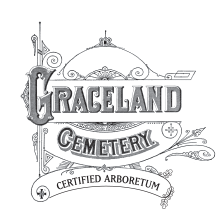Another tribute to Chicago’s great schools of architecture can be seen in Graceland Cemetery’s monuments to some of Chicago’s leading lights.
So many prominent people left behind impressive memorials, designed by leading architects and decorated by famous sculptors, that architectural tours through Graceland are enjoyed by thousands throughout the year. The Chicago Architecture Foundation has published a book for a self-guided tour, titled “A Walk through Graceland Cemetery,” which you can purchase for $10 from our office, plus $3 for shipping, or directly from the Foundation.
We’re indebted to the Foundation for many of the descriptions here. For much more detailed and learned architectural information about Graceland and Chicago’s architecture, we recommend you visit their website, www.architecture.org.
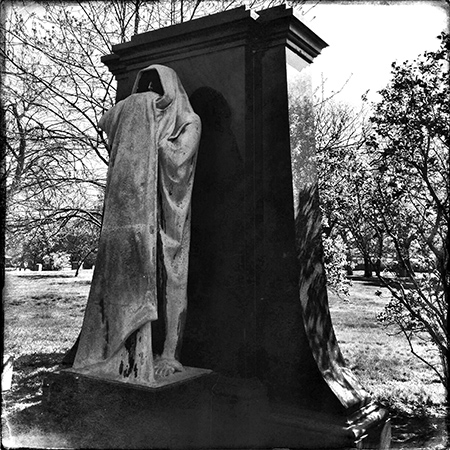 Dexter Graves, 1789 - 1844
Dexter Graves, 1789 - 1844
Graves was one of the first settlers who, according to the inscription on the back of the polished black granite slab, “brought the first colony to Chicago, consisting of 13 families, arriving here July 15, 1831 from Ashtabula, Ohio, on the schooner Telegraph.”
The bronze figure, “Eternal Silence,” was created in 1909 by sculptor Lorado Taft, whose monumental “Fountain of Time” stands at the west end of the University of Chicago Midway.
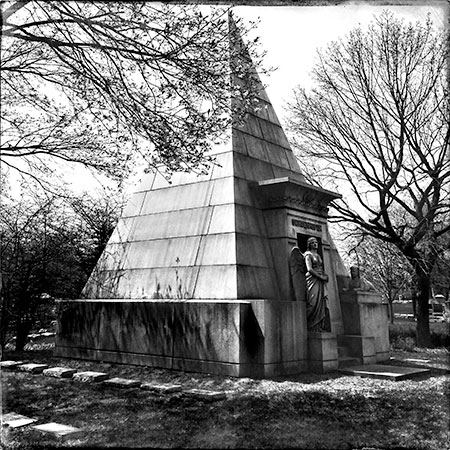 Peter Schoenhofen, 1827 - 1893
Peter Schoenhofen, 1827 - 1893
Wealthy brewer Schoenhofen’s pyramid was designed by architect Richard Schmidt in 1893. It features the unlikely combination of an Egyptian pyramid and sphinx with a typical Victorian era angel. Since that may be hedging one’s bet on the afterlife, we say: Prosit, Herr Schoenhofen. (Literal translation of this German toast: “May it be useful, Mr. Schoenhofen.”)
Martin Ryerson, 1818 - 1887
Of the three tombs design by famed Chicago architect Louis Sullivan, two are in Graceland. This, the Martin Ryerson Mastaba and Pyramid, was the first. Ryerson made two fortunes -- in lumber and real estate -- in the second half of the 19th century. Sullivan and his partner Dankmar Adler had designed four Ryerson buildings, and son Martin A. Ryerson turned to Sullivan for this unique black granite tomb, which combines two Egyptian burial monument styles into one massive, time-defying memorial.
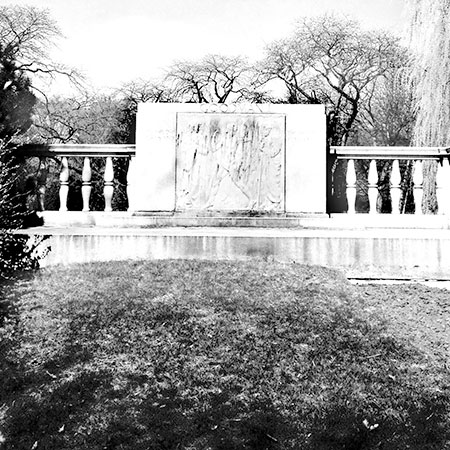 William Goodman, 1848 -1936
William Goodman, 1848 -1936
Goodman, another Chicago lumber magnate, had this impressive lakeside mausoleum built for his son Kenneth, a naval lieutenant in training who was a victim of the 1918 influenza epidemic. The elder Goodman’s friend, architect Howard Van Doren Shaw, designed it, using the same neoclassical style he would use in 1925 for the Goodman Theatre, which was founded as a memorial to the Goodmans’ dramatist son.
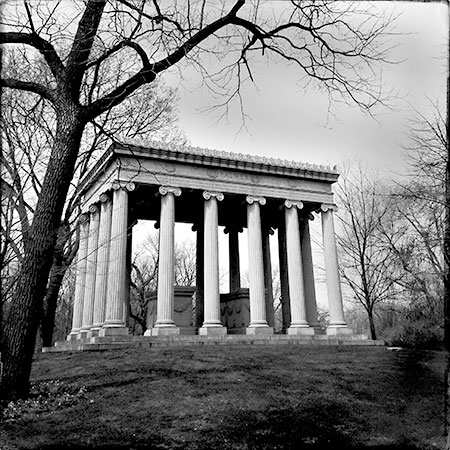 Potter Palmer, 1826 - 1902 & Bertha Palmer, 1849 - 1918
Potter Palmer, 1826 - 1902 & Bertha Palmer, 1849 - 1918
The grand Greek temple with the twin sarcophagi gives a clue to the lavish lifestyle of its occupants. Potter Palmer pioneered customer satisfaction in his dry goods store, with money-back guarantees, merchandise on approval, and attractive store displays. He sold his successful business to Marshall Field and Levi Leiter, and became successful in real estate. (You’ve heard of the Palmer House, no doubt.)
McKim, Mead & White of New York designed the temple, as well as Bertha’s parents' French Gothic tomb across the road.
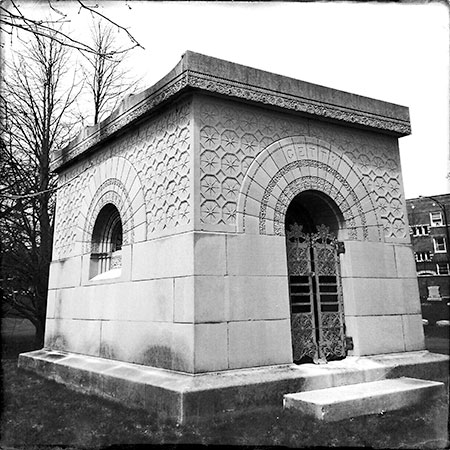 Getty Tomb
Getty Tomb
Considered the piece de resistance of all the fine monuments in Graceland, this masterpiece was commissioned by lumber merchant Henry Harrison Getty for his wife, Carrie Eliza. Designed by Louis Sullivan, it’s a delicately ornamented cube uniquely suited to its purpose as a woman’s last resting place. It was designated a city landmark in 1971, by the Commission on Chicago Historical and Architectural Landmarks. Their inscription on the plaque in front explains the building’s significance: “The Getty Tomb marks the maturity of Sullivan’s architectural style and the beginning of modern architecture in America. Here the architect departed from historic precedent to create a building of strong geometric massing, detailed with original ornament."
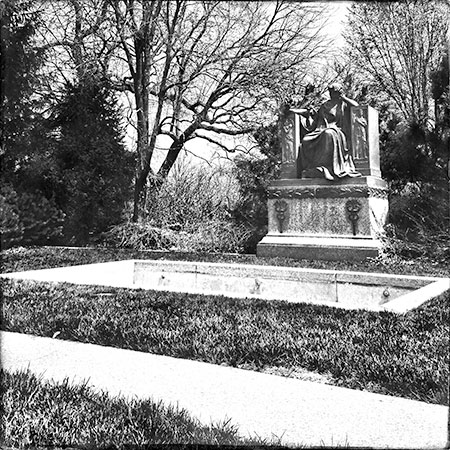 Marshall Field, 1835 -1906
Marshall Field, 1835 -1906
This giant of commerce is commemorated in a memorial created in by the two men who later would be responsible for the Lincoln Memorial – architect Henry Bacon & sculptor Daniel Chester French. Field, who went from store clerk to Chicago’s richest man, developed his famous company into the world’s largest wholesale and retail dry goods enterprise. French’s statue, the sad-faced woman titled “Memory,” holds oak leaves, a symbol of calm courage. The caduceus on the base, the staff of Mercury, is used today mostly to represent medicine. But we are told that here, it stands for commerce. Mercury was the classical god of commerce – as well as of skill, eloquence, cleverness, travel and thievery.
